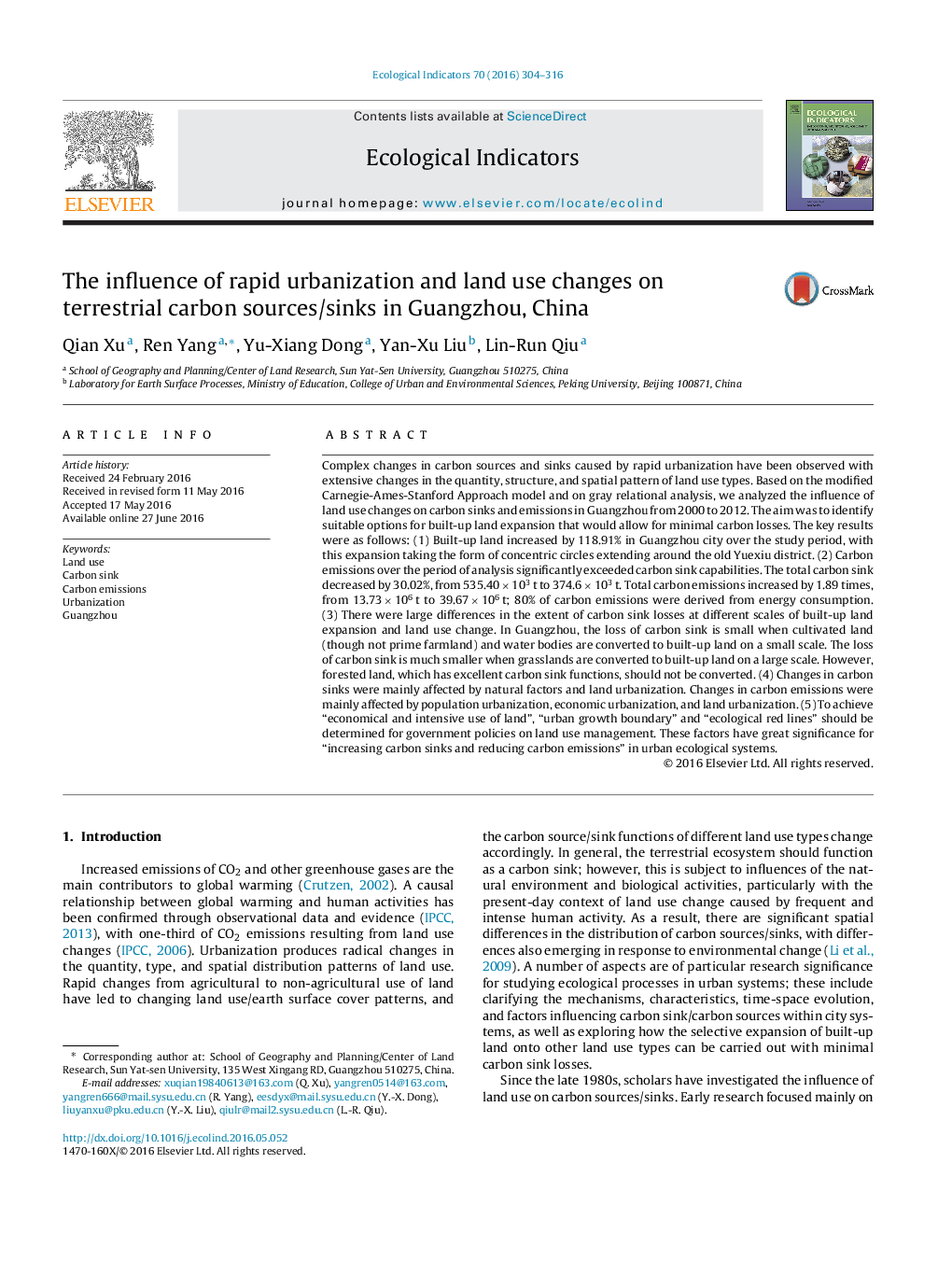| کد مقاله | کد نشریه | سال انتشار | مقاله انگلیسی | نسخه تمام متن |
|---|---|---|---|---|
| 6293101 | 1617132 | 2016 | 13 صفحه PDF | دانلود رایگان |
Complex changes in carbon sources and sinks caused by rapid urbanization have been observed with extensive changes in the quantity, structure, and spatial pattern of land use types. Based on the modified Carnegie-Ames-Stanford Approach model and on gray relational analysis, we analyzed the influence of land use changes on carbon sinks and emissions in Guangzhou from 2000 to 2012. The aim was to identify suitable options for built-up land expansion that would allow for minimal carbon losses. The key results were as follows: (1) Built-up land increased by 118.91% in Guangzhou city over the study period, with this expansion taking the form of concentric circles extending around the old Yuexiu district. (2) Carbon emissions over the period of analysis significantly exceeded carbon sink capabilities. The total carbon sink decreased by 30.02%, from 535.40Â ÃÂ 103Â t to 374.6Â ÃÂ 103Â t. Total carbon emissions increased by 1.89 times, from 13.73Â ÃÂ 106Â t to 39.67Â ÃÂ 106Â t; 80% of carbon emissions were derived from energy consumption. (3) There were large differences in the extent of carbon sink losses at different scales of built-up land expansion and land use change. In Guangzhou, the loss of carbon sink is small when cultivated land (though not prime farmland) and water bodies are converted to built-up land on a small scale. The loss of carbon sink is much smaller when grasslands are converted to built-up land on a large scale. However, forested land, which has excellent carbon sink functions, should not be converted. (4) Changes in carbon sinks were mainly affected by natural factors and land urbanization. Changes in carbon emissions were mainly affected by population urbanization, economic urbanization, and land urbanization. (5) To achieve “economical and intensive use of land”, “urban growth boundary” and “ecological red lines” should be determined for government policies on land use management. These factors have great significance for “increasing carbon sinks and reducing carbon emissions” in urban ecological systems.
Journal: Ecological Indicators - Volume 70, November 2016, Pages 304-316
